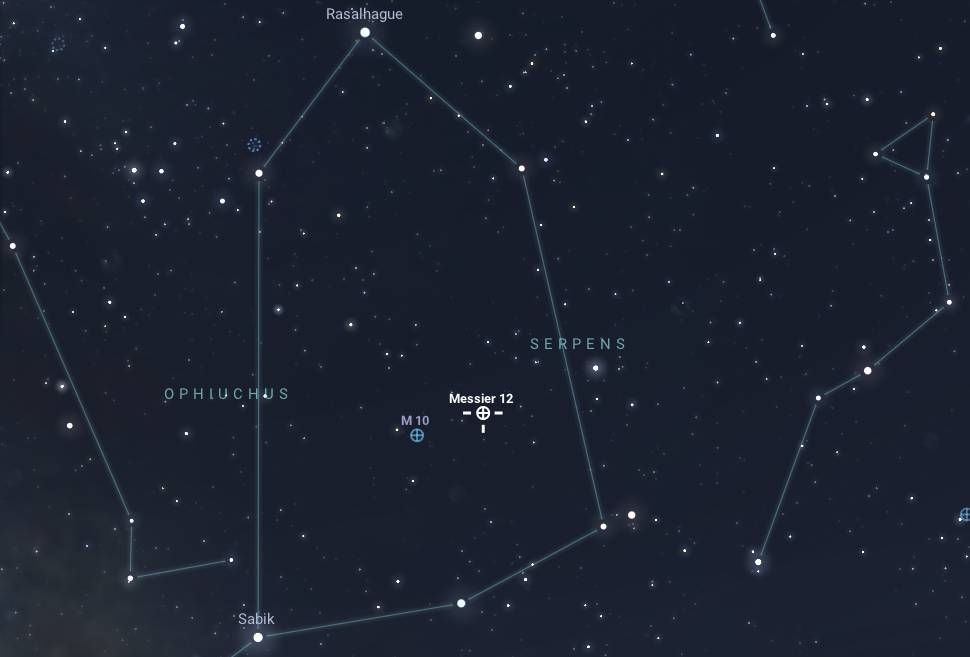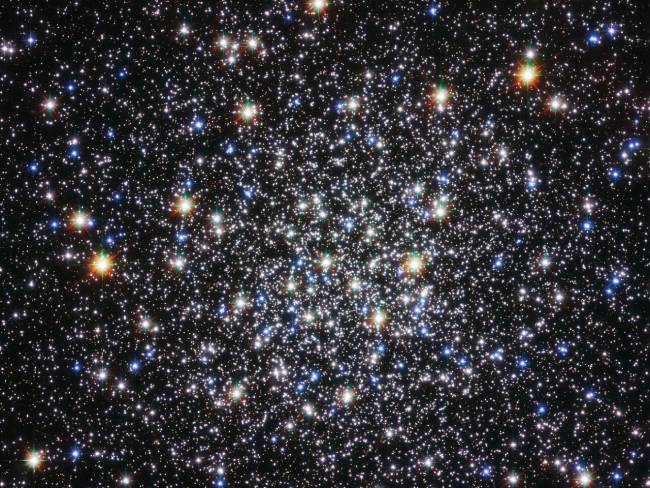Messier 12 (M12) is an open cluster located in the southern constellation Ophiuchus, also known as the Serpent Bearer. It is situated at an approximate distance of 15,700 light-years from Earth. This distance measurement is derived from the cluster’s apparent brightness and the observed characteristics of its stars. Here are some detailed insights into M12:
Composition
M12, like other open clusters, is composed of a group of stars that formed from the same molecular cloud, sharing a common origin. This cluster contains several hundred stars, showcasing a diverse range of stellar types. The population includes bright, hot blue stars, which are typically massive and burn their fuel rapidly, as well as cooler, fainter red stars that represent older stellar populations. This mix provides a glimpse into different stages of stellar evolution.
In addition to the variety of stars, M12 also contains a mix of main-sequence stars, red giants, and potentially even remnants of supernovae. The gravitational binding of the cluster allows these stars to remain relatively close together, creating a rich environment for studying stellar formation and evolution within the Milky Way. Observations of M12 provide valuable insights into the processes that govern the life cycles of stars and the dynamics of stellar clusters in general.
Size and Age
The cluster spans about 15 light-years in diameter, making it relatively compact compared to other star clusters. Interestingly, M12 is estimated to be around 15.7 billion years old, which places it among the oldest known star clusters in our galaxy. Its age indicates that it has survived numerous gravitational interactions and stellar dynamics over time, retaining its structural integrity. It’s relatively high metallicity compared to younger clusters suggests that it may have formed from gas enriched by previous generations of stars, contributing to the diversity of its stellar population.
Observation
M12 has a visual magnitude of approximately 7.7. This makes it visible to amateur astronomers using small to moderate-sized telescopes and binoculars, particularly under dark skies with minimal light pollution.
M12 is visible during the summer months from both hemispheres. In the Northern Hemisphere, M12 is best observed from late spring through summer, particularly between May and July. During this period, the host constellation Ophiuchus, reaches a prominent position in the night sky, allowing for optimal viewing.

In the Southern Hemisphere, M12 is also accessible from late autumn through winter, especially between June and August. Though it lies in the northern part of the sky, M12 can still be observed from the southern latitudes, appearing lower on the horizon but visible to stargazers, particularly those closer to the equator.
Observing M12 during nights with clear skies and minimal light pollution will enhance the viewing experience. It appears as a bright, dense concentration of stars when observed through a telescope, and individual stars within the cluster can be resolved with higher magnification.



